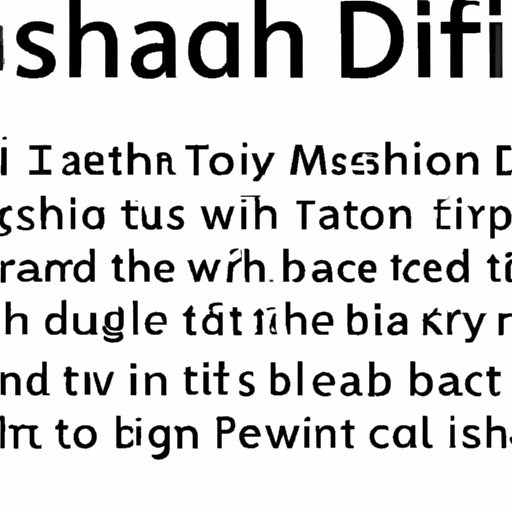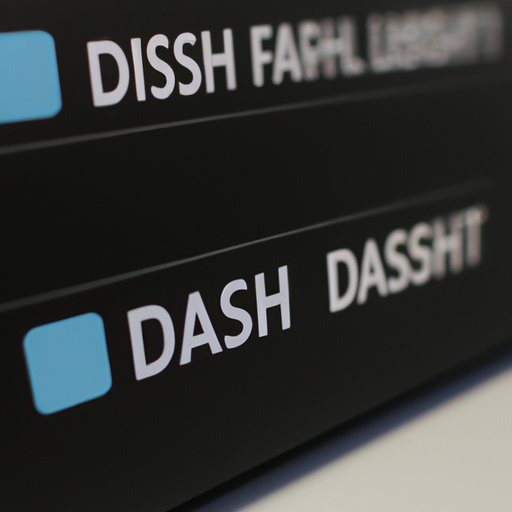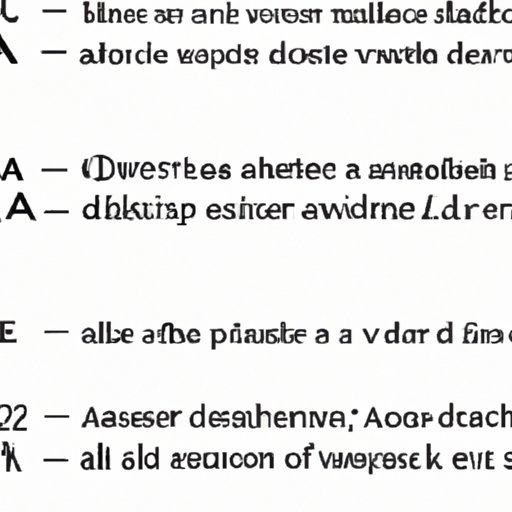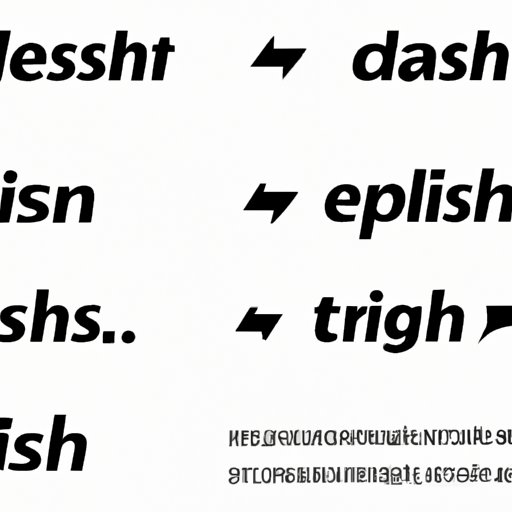Introduction
The dash is a punctuation mark that can be used to enhance writing and add clarity to your sentences. It is also known as an “em dash” due to its distinctive shape, which looks like a long horizontal line (—). Dashes are often used to emphasize or contrast ideas, break up sentences, or provide additional context. Understanding when and how to use dash correctly can help improve the quality of your writing.

Tips for Incorporating Dash Effectively in Your Writing
When it comes to using dash in your writing, there are a few key tips to keep in mind. First, understand how to use each type of dash correctly. There are three main types of dash: the em dash (—), the en dash (–), and the hyphen (-). Each type has its own distinct purpose, so it’s important to be aware of the differences between them. Second, use dash sparingly and strategically. While dashes can be a great way to add emphasis or break up a sentence, too many dashes can make your writing appear cluttered and unprofessional. Third, be consistent with dash usage. If you choose to use dash in your writing, make sure to use the same type throughout the piece. This will help ensure a logical and cohesive flow to your writing.

Exploring the Different Types of Dash and When to Use Each
Now that we’ve discussed some tips for incorporating dash into your writing, let’s explore the different types of dash and when to use each. The most common type of dash is the em dash (—). This type of dash is typically used to indicate a sudden break in thought or to set off additional information. For example, you could use an em dash to emphasize a phrase or add an afterthought to a sentence. The en dash (–) is slightly shorter than the em dash and is mainly used to indicate a range of values or dates. For example, you could use an en dash to denote a range of years (e.g., 2019–2020). Finally, the hyphen (-) is the shortest type of dash and is mainly used to join two words together (e.g., “well-known”). It can also be used to separate syllables in a word (e.g., “co-operate”).
The Benefits of Utilizing Dash in Your Writing
Using dash effectively in your writing can have several benefits. First, it can improve the clarity and readability of your writing. By breaking up longer sentences or emphasizing certain words, dash can help make your writing easier to understand. Second, dash can add emphasis to your writing and draw attention to key points. It can also be used to create pauses or breaks in your text, which can make it more visually appealing. Finally, dash can help enhance the flow and structure of your writing. By using dash strategically, you can make your writing more cohesive and organized.
How to Avoid Overusing Dash in Your Writing
It’s important to remember that while dash can be a great tool for improving your writing, it can also be overused. To avoid this, try to limit the number of dashes used per sentence. You should also be careful not to use dashes to replace commas, as this can make your writing seem choppy. Finally, don’t use dashes to create arbitrary divisions in your writing. This can make your writing seem disorganized and difficult to follow.

Examples of Dash Usage in Popular Writing
Now that we’ve discussed the basics of using dash in your writing, let’s look at some examples of dash usage in popular writing. In literature, authors often use dash to convey a character’s thoughts or emotions. For example, in Emily Bronte’s novel Wuthering Heights, the protagonist Heathcliff says, “I cannot live without my life! I cannot live without my soul!” Here, Bronte uses an em dash to emphasize the intensity of Heathcliff’s emotions. In journalism, dashes are often used to indicate a pause or break in a quote. For example, a journalist may write, “He said, ‘This is an important moment—for me, for our country, and for the world.'” Here, the em dash helps convey the importance of the statement. Finally, in online content, dashes can be used to add emphasis or create visual interest. For example, a blog post might include a sentence such as “This project was a success—we exceeded our goals!” Here, the em dash helps to emphasize the positive outcome of the project.
Conclusion
In conclusion, dash can be a great way to enhance your writing and add clarity to your sentences. Knowing when and how to use each type of dash correctly can help you become a better writer. Keep in mind that while dash can be a powerful tool, it should be used sparingly and strategically. By following these tips and exploring the different types of dash and their uses, you can begin to incorporate dash into your writing with confidence.
(Note: Is this article not meeting your expectations? Do you have knowledge or insights to share? Unlock new opportunities and expand your reach by joining our authors team. Click Registration to join us and share your expertise with our readers.)
